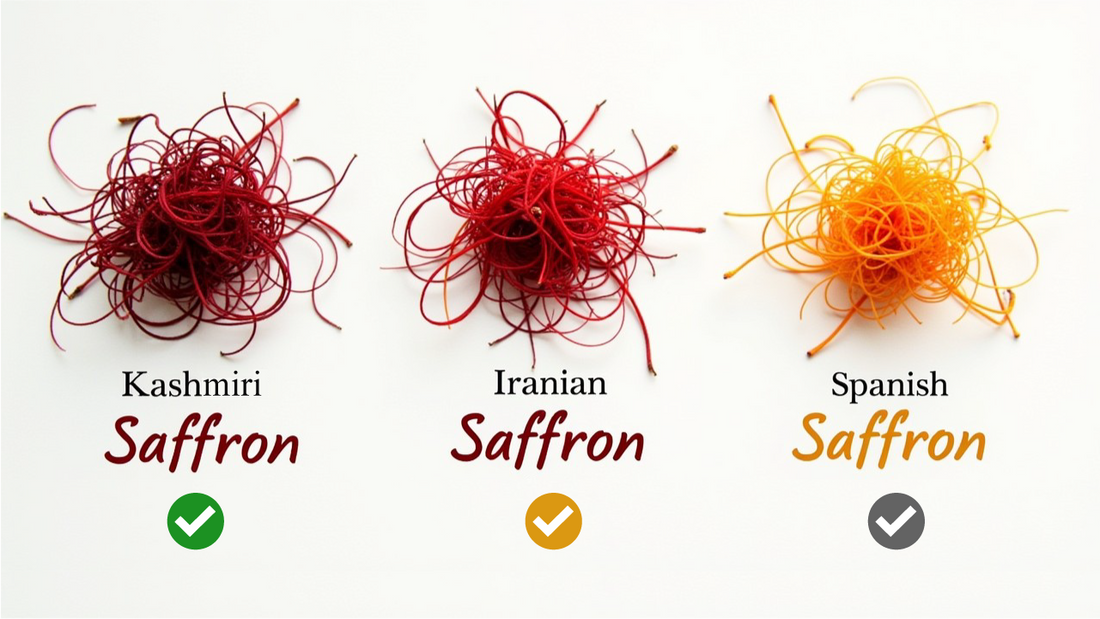
Thread by Thread: Exploring the Differences Between Kashmiri, Iranian, and Spanish Saffron
| Component/Characteri | Kashmiri Saffron | Iranian Saffron | Spanish Saffron |
| Color | Dark red, thicker threads | Dark red with slightly orange tips | Red with lighter orange tips |
| Aroma | Very strong and intense aroma | Strong, slightly floral and earthy | Mild, subtle and sweet aroma |
| Taste | Strong, slightly bitter with floral notes | Rich, slightly bitter, earthy | Milder, slightly sweet and earthy |
| Crocin Content (Color Strength) | Highest (even higher than Iranian) | High (high pigment intensity) | Moderate to high |
| Safranal Content (Aroma) | High | Moderate to high | Moderate |
| Picrocrocin Content (Flavor) | High | High | Moderate |
| Price | Most expensive | Moderately expensive | Moderately expensive |
| Harvesting Season | Autumn (October-November) | Late autumn (October-November) | Late autumn (October-November) |
| Production | Limited, small-scale production | World’s largest producer (~90%) | Moderate production (well known for La Mancha region) |
| Thread Thickness | Thicker, denser threads | Thin to medium | Thin, delicate threads |
| Region of Cultivation | Pampore, Kashmir (India) | Khorasan, Iran | La Mancha (Spain) |
Notes:
Crocin is responsible for the saffron's color intensity.
Safranal gives saffron its distinct aroma.
Picrocrocin contributes to the bitter flavor of saffron.
Kashmiri saffron is often considered the most potent in terms of both aroma and color strength, but its availability is more limited, making it more expensive than Iranian and Spanish varieties.
| Component/Characteris | Kashmiri Saffron | Iranian Saffron |
| Crocin Content | > 200 @ 440 nm | < 200 @ 440 nm |
| Safranal Content | > 50 @ 330 nm | < 50 @ 330 nm |
| Picrocrocin Content | > 70 @ 257 nm | < 70 @ 257 nm |
| Filament Length | Long and Thick Head | Short and Thin Head |
| Color | Deep Red | Red |
| Crocin Content | 8.72% | 6.82% |
*Source: Quality Control Lab, Directorate of Agriculture
